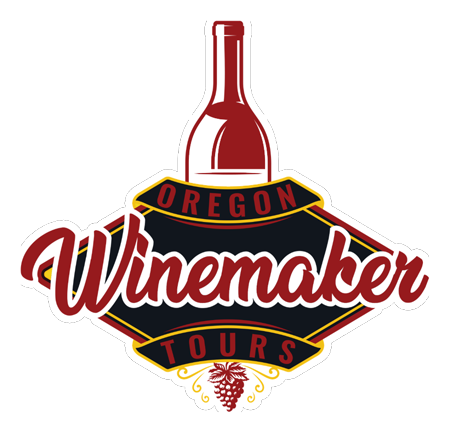Crush
A Personal And Custom Vineyard Tour
Quality Starts in the Vineyard
Every approach to supreme wine quality starts in the vineyard. Most every Oregon vineyard is dry-farmed, and many are designated as estate fruit (complete control of the vineyard-to-cellar process). Other designations refer to how the vineyard is sustainably managed, such as Biodynamic, LIVE certified (low impact viticulture and enology), or Organic. The Willamette Valley delivers extremely moderate-cool climate with historically low yields, and represents a diverse array of microclimates, elevations, exposures and soils. While the average topsoil depth on our planet is 6-9 inches, areas within the Willamette Valley can often have 30-60 feet of topsoil!
Vine Selection
Vineyard managers have over 100 different clonal types of Chardonnay and Pinot Noir from which to choose and several roots stocks for their grafting. Selecting the perfect clone and rootstock combination for each vineyard block is critical. For example, wines made from the newer plantings of Dijon clone Chardonnay are getting top international acclaim!
Grape Harvest
The Pinot Noir varietal is notoriously more complicated to work with than other grapes. Grapes that are fresh, cool and unbruised are much less susceptible to oxidation, so excellent harvesters pick in early morning when the fruit is still naturally chilled. Most picking crews use quarter or half-ton bins; size helps to limit the cumulative weight that can smash the whole berries. Upon arrival at the winery, the newly picked fruit is staged in a cool space. A team of sorters should quickly remove unwanted leaves and other material from the grape clusters on a sorting table, which moves the fruit along in front of them as they work. Most often with red grapes such as Pinot Noir, 100% of the grape clusters are gently de-stemmed, and the de-stemmed whole berries enter the fermentation container.
Fermentation
During fermentation (when juice naturally extracts from the grape), there are many individualized approaches to winemaking, including temperature management, yeast and enzyme management as well as fruit handling. As a winemaker, I love to work with whole or partially whole-cluster fermentations, (not de-stemmed fruit). I prefer that the fermenting berries are cooled with dry ice to begin gentle fermentation, minimizing heat spikes and extending the fermentation process. The musts can get very warm during fermentation. Hot ferments with Pinot Noir will often result in red cherry flavors and may stress out the yeast, which leads to other consequences.
A great option is to first allow the fruit now called must, to cold soak for up to a week before fermentation is started. During this phase, dry ice is layered throughout the fruit to keep it cool, prevent oxidation, and keep any spoilage organisms dormant. Next, the Pinot Noir must is usually inoculated with specific yeast strains (if it is not inoculated it is called a native-fermentation); and individualized punch-down strategies, selected to optimize extraction and attempt desired terroir characteristics for each batch. As fermentation gets underway, bins of Pinot Noir may be moved between cooler and warmer rooms to either slow down or speed up the metabolic process or more dry ice may be added.
Pressing and Settling
Eventually, the fermenting red wine undergoes a press cycle that helps avoid harsh tannins while extracting flavor from the must by slowly, precisely and gently press grape skins and seeds. Finally, the pressed wine is transferred into closed-top tanks for settling, before being transferred to barrel, known as its first racking. I believe this long gentle cellaring techniques produces cleaner Pinot Noir fruit flavor.
White wines, such as Chardonnay and Pinot Gris, are treated differently from the start. The grapes (often with their stems) go immediately into a press. After pressing, the wine is transferred to closed-top tanks, where heavy particulate matter settles out for a short time. Then the developing wine is inoculated with yeasts and moved into oak barrels or stainless steel tanks for fermentation. Most other white grapes are fermented only in stainless steel, as the oak tannin from barrel fermentation can negatively affect some of the desired flavors.

